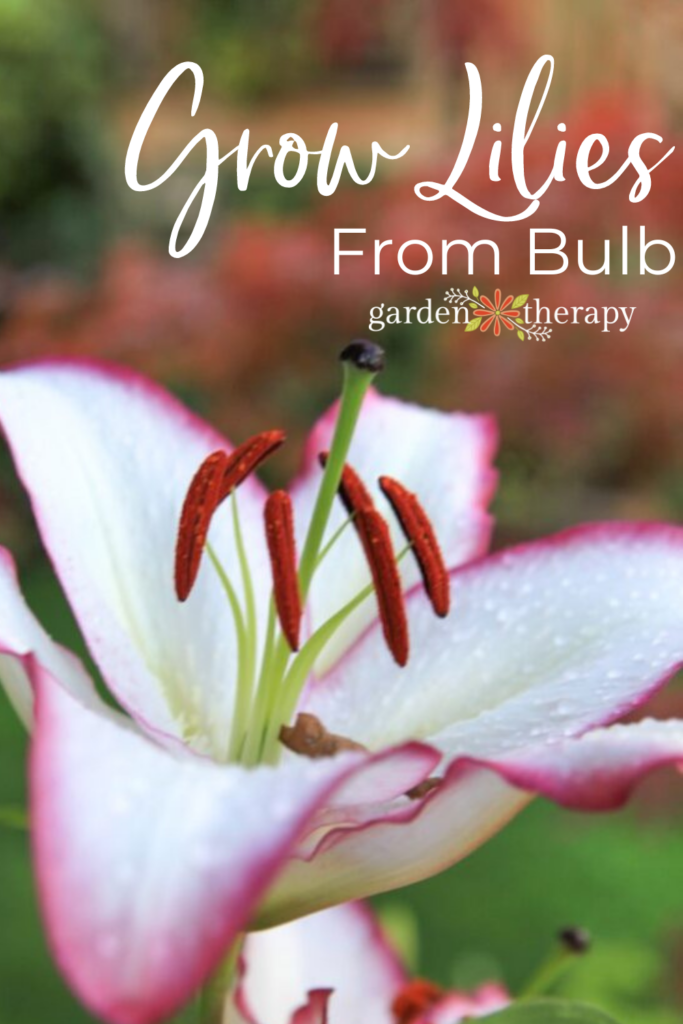Lilies are one of the most popular garden and cutting flowers, and for good reason! These versatile bulbs are easy to grow and can easily naturalize in the garden, returning year after year. If you want to add these bulbs to your garden, here’s what you need to know about how to grow lilies.
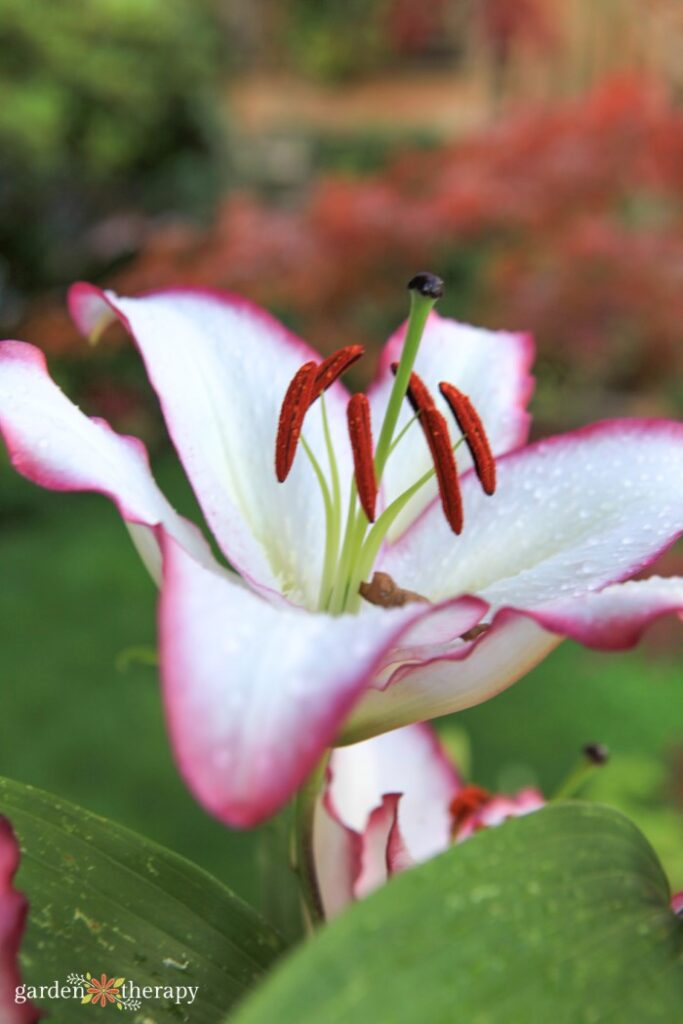
Lilies are one of the most versatile summer bulbs out there. They come in pretty well any colour under the rainbow, many with speckles and ombre hues. And the fragrance! Boy, when you get a fragrant variety, they do not disappoint.
Lilies are also one of the hardiest summer bulbs, acting as perennials and naturalizing in most gardens they’re planted in.
Because lilies are so popular and vast, there’s often quite a bit of confusion over what constitutes a lily. For instance, calla lilies, canna lilies, and lily of the valley are all not true lilies (read more about true lilies here).
This post will cover what you need to know about how to grow true lilies and get a wave of beautiful colour year after year.


Sponsored post: thank you thank you to flowerbulb.eu for sponsoring this post on how to grow lilies. I love working with them because they have the simple goal of encouraging people to grow flower bulbs in their garden. Go to flowerbulb.eu for inspiration and education!
Meet the Lily Flower
Few flowers come as bold and versatile as the lily. Summer bulbs tend to provide brilliant splashes of colour, and lilies do not disappoint. They come in any colour you can think of, sometimes with spotted patterns and contrasting colours.
Most lilies bloom from June to August, but you can get flowers as early as May and as late as September for some varieties.
Lilies have been cultivated for thousands of years. Some of the first mentions of lilies date back to 4,000 years ago. The Greeks particularly loved lilies, including pictures of them on their ceramics.
Artifacts with lilies have been found from the ancient Minoan culture of Crete. Also popular in China and Japan, they’ve been used as a dining room centrepiece flower for centuries.
Native to the northern hemisphere, lilies often grow naturally in mountainous regions. They grow best in Zones 5-8, though there are lilies that can handle conditions as low as Zone 3 and zones as high as Zone 9.


Lily Plant and Care Guide
Planting Instructions
When planting lilies, your best bet is to follow the instructions on the packaging. Since there are many different types of lilies out there, they all will have slightly different planting instructions.
That being said, here are some general planting instructions you can follow. The lily is a true bulb, slightly rounded in shape with a somewhat pointed top. Most lilies should be planted with the roots facing down and the “pointy” end up, about 6 inches deep.
Space your lilies 12 inches apart if you’re planting multiple bulbs. Mix in some compost when planting.
You can plant your lilies in early-to mid autumn, as well as mid-spring once the threat of frost has passed. If planting in autumn, add a layer of mulch to insulate the bulbs during the winter and suppress weeds come spring.
Sunlight Requirements
Lilies thrive in full sun, ideally getting between 6-8 hours of direct sunlight. When they have too much shade, they will try to seek it out, getting spindly and falling over in the process.
Lilies like to have cool feet, AKA they want shade on the lower half of the stem. To do this, ensure there are some ground cover plants that will shelter the base of the lily, or place some other short annuals around the base.
Lilies also pair exceptionally well with perennials since they act the same and will return the following year. I really love them with ferns!
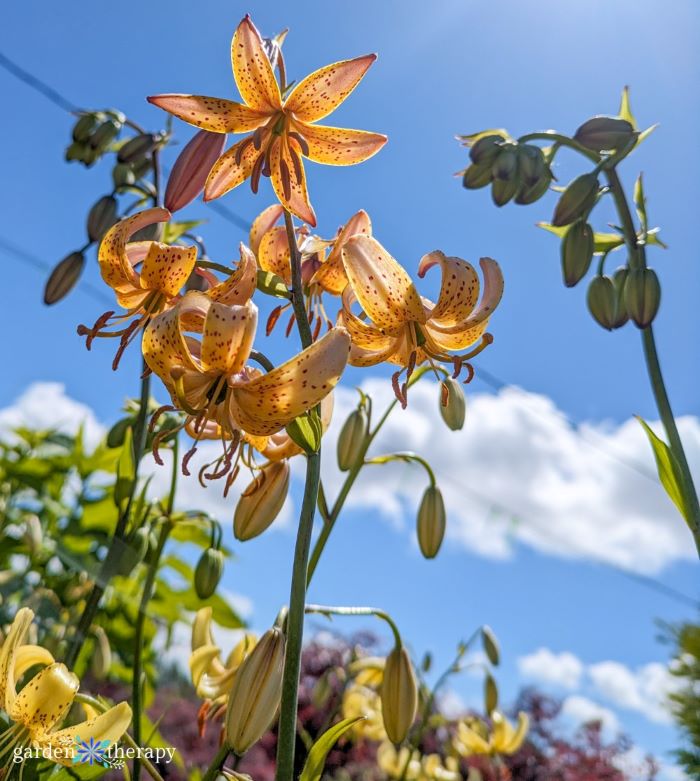

Water
Lilies like well-drained soil, as water trapped beneath the surface can rot the bulb. If you have poor soil, mixing in compost is a good idea to improve it.
Once the lily bulbs emerge in the spring, you can begin to water them. I only water mine if we’re having a noticeable spring drought, otherwise, we get enough moisture for the lilies to do fine on their own.
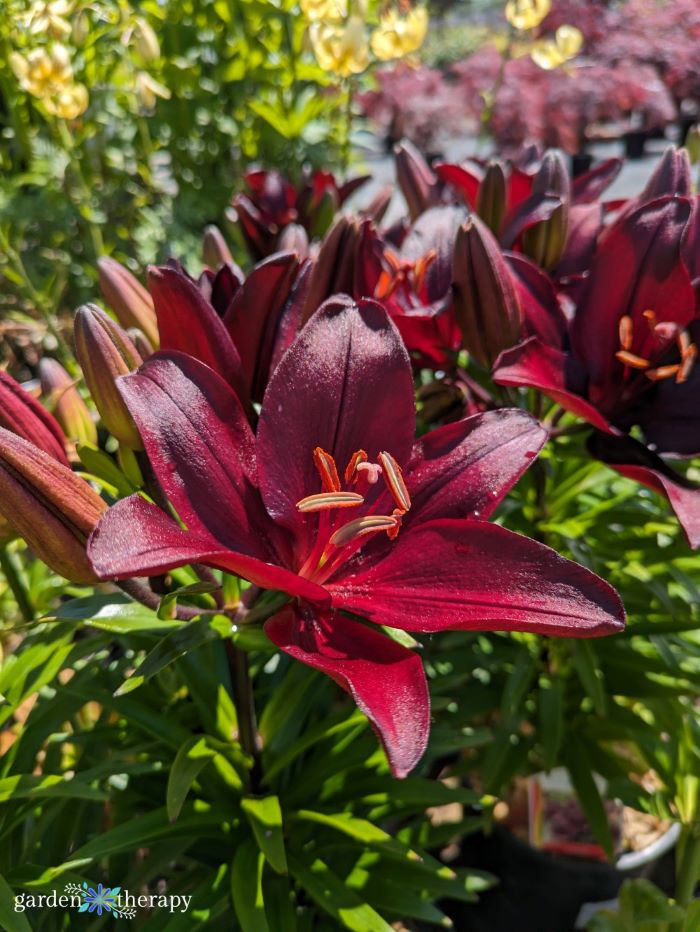

Soil
Besides needing good drainage, lilies aren’t too picky about their soil. Most will prefer acidic to neutral soil, but there are a few noticeable varieties, such as Madonna lilies, that prefer alkaline soils. You can perform a pH test on your garden following these instructions.
There is no need to fertilize lilies that are planted in the garden. Just adding a layer of compost on top of the soil here and there is all your lily needs for nutrients.


Planting Lilies in Pots
Lilies are known to grow exceptionally well in pots. Of course, the pots must be big enough to accommodate the lily, especially since we plant them about 6 inches deep. A pot that is 12-16 inches tall is good…and don’t forget one with drainage holes!
I use my own potting soil mix for my container plants, and will add in fertilizer every two weeks during the growing season.
Only plant low-growing lily cultivars in pots, especially if it will be in a windy place. Keep it below cultivars that are 30 inches tall or lower. Many Asiatic varieties are good for pots.


Using Lilies as Cut Flowers
You can have lilies from June to August, depending on what variety you grow. Out of the many types of lilies, Asiatic, oriental, and lilium longiflorum (Easter lilies) are some of the more popular cut flowers.
Asiatic lilies are the first to bloom. Because they grow upward and really stand out in a bouquet, they are the most common lily grown commercially for cut flowers.
Oriental lilies are well known for being very fragrant, easily filling up a room with their scent from just one bloom. They also create some of the grandest lily blooms.
Lilies are known for being a long-lasting cut flower, blooming for up to ten days once in the vase.
When cutting the flowers from your garden, cut them once the buds are coloured and the bottom flower on the stalk is just beginning to open.
Lily pollen is messy, and can stain tables or counters. So once the lily blooms, use a tissue to remove or cut off the pollen anthers.
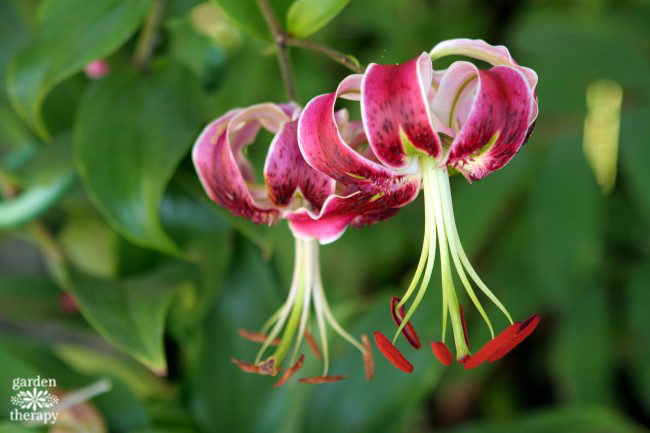

Caution: Lilies and Cats
Once upon a time, I had the most magnificent lily. The gorgeous ‘Black Beauty’ (shown above) was given to me as bulbs by a dear friend. She was so happy in my garden that she grew into a mammoth that must have neared ten feet high in her prime.
But unfortunately, I had to dig them all up.
But why, you ask? Well, it’s because my family expanded to include this guy.
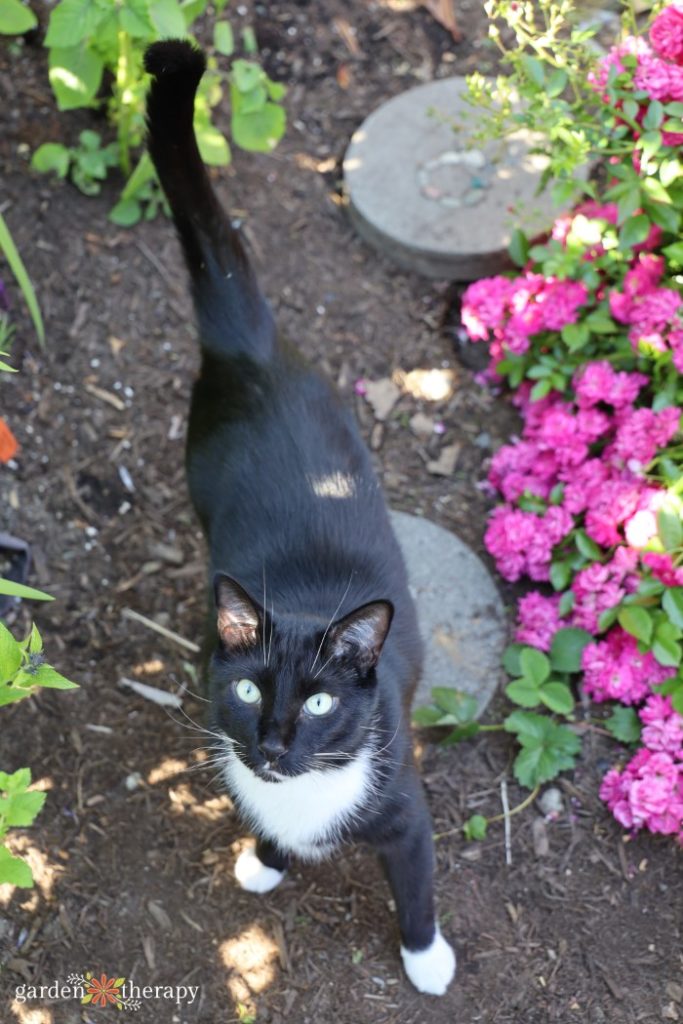

If you haven’t my handsomely dressed cat yet, that’s Magic. And lilies are extremely toxic to cats. Even just a lick of the pollen on their fur can make them severely ill.
So, as much as I loved those beautiful lilies, I love Magic more. It was time to say goodbye to my lily arch. Just look at how much pollen can be on lilies!
Since I couldn’t transplant her until the end of the growing season, I had to go out every day and hand-cut the pollen from the stems the first year I had Magic. I admired my lily every day knowing she wouldn’t be in the garden next year.
While she’s now long gone and has a new home, I still hold an affinity for lilies. Any time I see them in a passing garden, I always stop to admire them. I will grow them again in my garden just as I did for the 10 years before I had a cat.
Try Growing These Summer Bulbs




